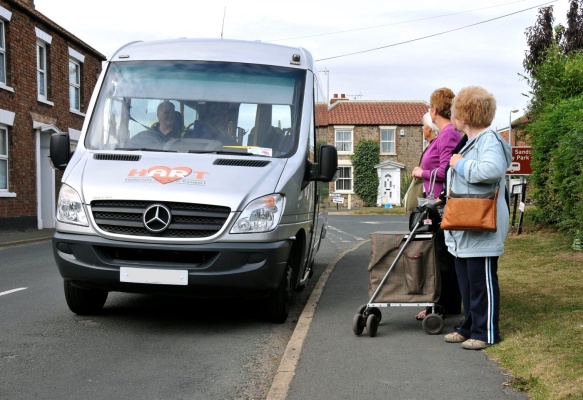Humber and North Yorkshire Community Transport Report
This report, commissioned by the HNY HCP, was produced by three charities representing community transport providers in the region. Thanks to East Yorkshire Community Transport, Humber Wolds Rural Action and Hambleton Community Action.

Recommendations
Throughout the exercise to map the community transport provision and associated conversations with partners, the following are a set of recommendations that the system should adopt to provide sustainability to our CT providers, ensure our population has the required services and to ensure that the ICB benefits from having a thriving and sustainable provision:
- Integration. Community transport needs to be embedded in the emerging ‘integrated’ models of working, to ensure accessibility, for those who need it, to health and care
- Sustainability. To enable sustainability, community transport providers need appropriate contracts in place. This should cover multiple years and allow for inflationary increases, which enables planning for the future and so that contracts do not become undeliverable
- Funding. The demand on community transport services is increasing, therefore funding needs to increase as well. Much of the demand is coming from health-related journeys, but there is little health related investment
- Communications between the sector and system needs to be improved. Changes within health and care can have a knock-on effect to providers, if we are more aware of plans and challenges, we have the opportunity to prepare and work collectively on them. This can be achieved through current structures and the VCSE Collaborative providing a mechanism to conduct this through
- Appointment scheduling. The community transport provision is limited and largely reliant on volunteers, therefore we need to make the most of the resource we have. Appointment scheduling is crucial to this and if organisations can work with community transport providers, journeys can carry multiple people creating a more efficient use of the resources
- Partnership working with the system. Time and energy need to be put into partnership working and building relationships between providers and health colleagues at place. The stronger the relationships are, will enable greater collaborative working that means they system as a whole will operate more effectively, and patients will feel the benefit
- Partnership working as a collective. Similar to above, community transport organisations need to build partnerships between organisations. One organisation cannot deliver everything, collectively we can deliver a greater service and will be more sustainable longer term. Working collaboratively will mean we can maximise the opportunities working with health rather than as many individual organisations, this could lead to a lead provider model which would be more efficient
- Improving data collection. To improve the understanding of how community transport providers operate and where the demand is, we need to have a basic level of data. As shown in this report data collection is inconsistent, we propose as a minimum organisation should record the number of journeys and mileage, a basic profile of the person they are transporting and a reason for their journey
- Forward planning. Community transport is always going to have a place in the community, as a system we need to support the development, for example enabling providers to access training which supports their organisation but also creates a diversity that colleagues in the system can learn from each other. In addition, the system can support with the need to recruit additional drivers and work collectively locally to broaden the reach and encourage more volunteers to come forward






